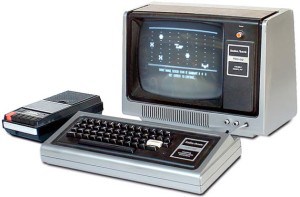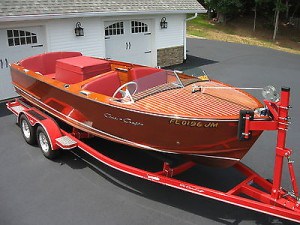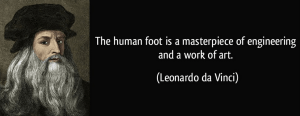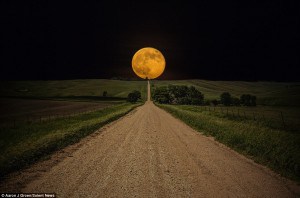Everything comes back to considering an audience, to the user experience, not only in the product (the outcome) but also in the process (the story).
Does empathizing well transcend the gap between disciplines? Is it empathy that sells products as effectively as it produces them? Few of us are able to transmit the value and expression of both hard and soft science, which is why surgeons don’t always have awesome bedside manners, why account managers are often technically illiterate, and why some of the most sophisticated minds in engineering have no sense of or taste in design.
I’ve been busy, tasked with formalizing a UX practice among a group of designers and engineers on behalf of a creative agency down on Michigan Avenue in Chicago. I’ve come away from that experience reminded what a tall order it is to nudge people to think in more empathetic ways.
When you ask them (and I have asked many over the past 3 years), most people believe they have a strong sense of empathy.
This just isn’t true in practice. Empathy isn’t as simple as thinking that everyone thinks the way you do. It’s not simple user-advocacy, either. Quite the contrary. While I believe empathy can be taught to a certain degree, my working theory is that it has a lot to do with how people were raised.
I grew up in a family of talented, self-taught parents who were into cool stuff. A big plus was they didn’t distinguish between art and engineering, mostly accidental simply for a lack of formal training. So the two have always lived in harmony together in the same room in my mind. This is why I’m idealistic in my belief that one won’t reach its full potential on its own, not without the other.
 Mom was a gifted musician who also drove the idea that technology as a tool was only going to grow in significance. It was because of her I grew up surrounded by Radio Shack’s TRS-80 (left), Atari’s 1200XL, IBM’s PC/PCjr, Amiga, Commodore 64, MacIntosh, etc. She shared her vision about the world, the future, and the possibilities computing would bring.
Mom was a gifted musician who also drove the idea that technology as a tool was only going to grow in significance. It was because of her I grew up surrounded by Radio Shack’s TRS-80 (left), Atari’s 1200XL, IBM’s PC/PCjr, Amiga, Commodore 64, MacIntosh, etc. She shared her vision about the world, the future, and the possibilities computing would bring.
I played music with her on the Wurlitzer organ and upright piano that dominated our living room. Along with an assortment of other instruments, the house was often filled with the music we made. I never learned to read but mom praised my ear and encouraged me to listen to something once or twice and then play along, tinkering with this or that part of the song. She was a gentle teacher who only expected me to find the way that worked best.
 Dad was an artist by passion, not profession, a gifted doodler and storyteller, a natural born salesman, able to captivate people of all backgrounds and ability levels. He was always drawing simple sketches and making connections and seeing trends waaay ahead of the herd. In his free time he constantly restored old boats, bicycles, cars and motorcycles and included me in those projects in intentional ways, demonstrating to me the value (and fun) of being interested in and attempting to understand the hidden machinery behind things.
Dad was an artist by passion, not profession, a gifted doodler and storyteller, a natural born salesman, able to captivate people of all backgrounds and ability levels. He was always drawing simple sketches and making connections and seeing trends waaay ahead of the herd. In his free time he constantly restored old boats, bicycles, cars and motorcycles and included me in those projects in intentional ways, demonstrating to me the value (and fun) of being interested in and attempting to understand the hidden machinery behind things.
I spentt countless summer hours sanding the teak and mahogany of a vintage Chris Craft runabout, applying 5-6-7-8 coats of varnish to near-perfect grain, helping disassemble or reassemble this engine or that and a lot of cleaning up. Dad insisted we always put things away “better than we found them.”
Mostly it was listening to dad ask a lot of questions, learning to ask even better ones and sticking around for the complete and often highly-detailed answers. He also reinforced the idea that often we ask too many questions, too fast. I still remind myself of this, especially when new to a culture or role, that asking questions too soon can be extremely counter-productive and a waste of time, an idea I have never heard anyone else posit but him.
Dad was gifted at troubleshooting challenges he created for himself. When he didn’t know something, he was even more gifted at finding someone who knew the answer. We spent mellow weekends sauntering around marinas near and far until we would find a hidden workshop wherein someone true to the same cause was hard at work and pleasantly distracted by our inquiries and happy to share best practices from what they’d learned.
I used to often get the feeling these fellow craftsmen had been working their entire lives, waiting patiently to have someone like my dad happen upon their small corner of the world to validate and exult the work they had been, up until that moment, toiling away at thanklessly.
Hanging out with dad, no matter what it seemed like at the moment, even standing alone in an empty garage, always led to the notion that somebody somewhere was busy doing something extraordinary.
Meanwhile, as I watched dad draw sketches of plans on a blackboard in the garage, he taught me that art was not always about being decorative, but was also a different way of communicating ideas, and in fact one that could bridge the worlds of art and engineering, knowledge and insight, to broad audiences with diverse learning styles. All the while, it was understood between us – these were all exercises, not facts. It was okay to make mistakes because both of my parents, lacking formal training in any of their respective pursuits, freed us up that way.
 Largely because of that, I came to understand that, contrary to what I was being conditioned to believe in school, the worlds of art and design were not, in fact, incompatible with science and engineering and not exclusive to themselves at all. I realized, when combined, you could create things that were amazing that couldn’t be done in either domain alone.
Largely because of that, I came to understand that, contrary to what I was being conditioned to believe in school, the worlds of art and design were not, in fact, incompatible with science and engineering and not exclusive to themselves at all. I realized, when combined, you could create things that were amazing that couldn’t be done in either domain alone.
In school they were treated as separate worlds. My teachers consistently told me that I had to “get serious” and focus on one or the other. Urging me to specialize only amplified my appreciation for polymaths like Michelangelo, Leonardo da Vinci, Benjamin Franklin, Bran Ferren – people who did exactly the opposite.
There seems to be a growing movement of combining empathy (also called Human-Centered Design) on solutions big and small, from the Squatty Potty to the smartphone. Soon the majority of people on the planet will have connectivity to the Internet and the idea of connecting everyone to both knowledge and each other will endure.
So what’s next? What imminent advance will be the next Michael Jordan of inventions?
 The ingredients for the next marvels are all around us, waiting for people with vision, empathy, broad knowledge, multidisciplinary skills, and intense passion to make dreams real.
The ingredients for the next marvels are all around us, waiting for people with vision, empathy, broad knowledge, multidisciplinary skills, and intense passion to make dreams real.
These people don’t just spontaneously show up. They need nurturing and encouragement right from the start as kids. We need to help them discover their identities and passions, encourage them to work hard, fail, and help them understand that failure is a necessary step towards success, and to persevere. We need to help them find their own role models and give them the confidence to believe in themselves, and encourage them to find their own path, even if it’s very different from our own.
It bears repeating how important it is to periodically pry them (and ourselves) away from computers, phones, tablets, and go out into the sunlight to experience both the naturally engineered and designed wonders of our world. If we don’t, they won’t understand what these precious things are that someday they will be responsible for protecting and improving.
Please foster and nurture empathy to help ensure the next generation understands that art, design, and empathy aren’t luxuries. These gifts are essential to our survival, to overcome our differences and achieve greater things.
One Comment
Comments are closed.